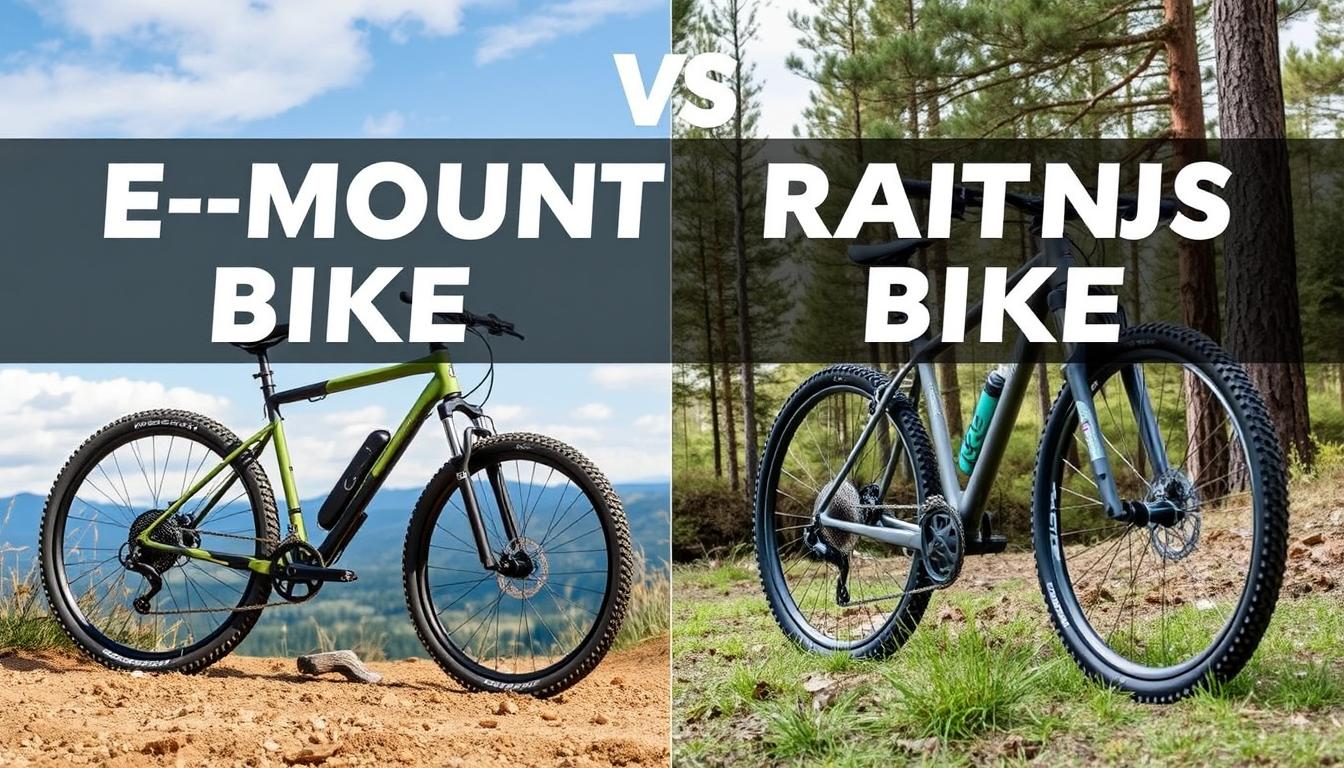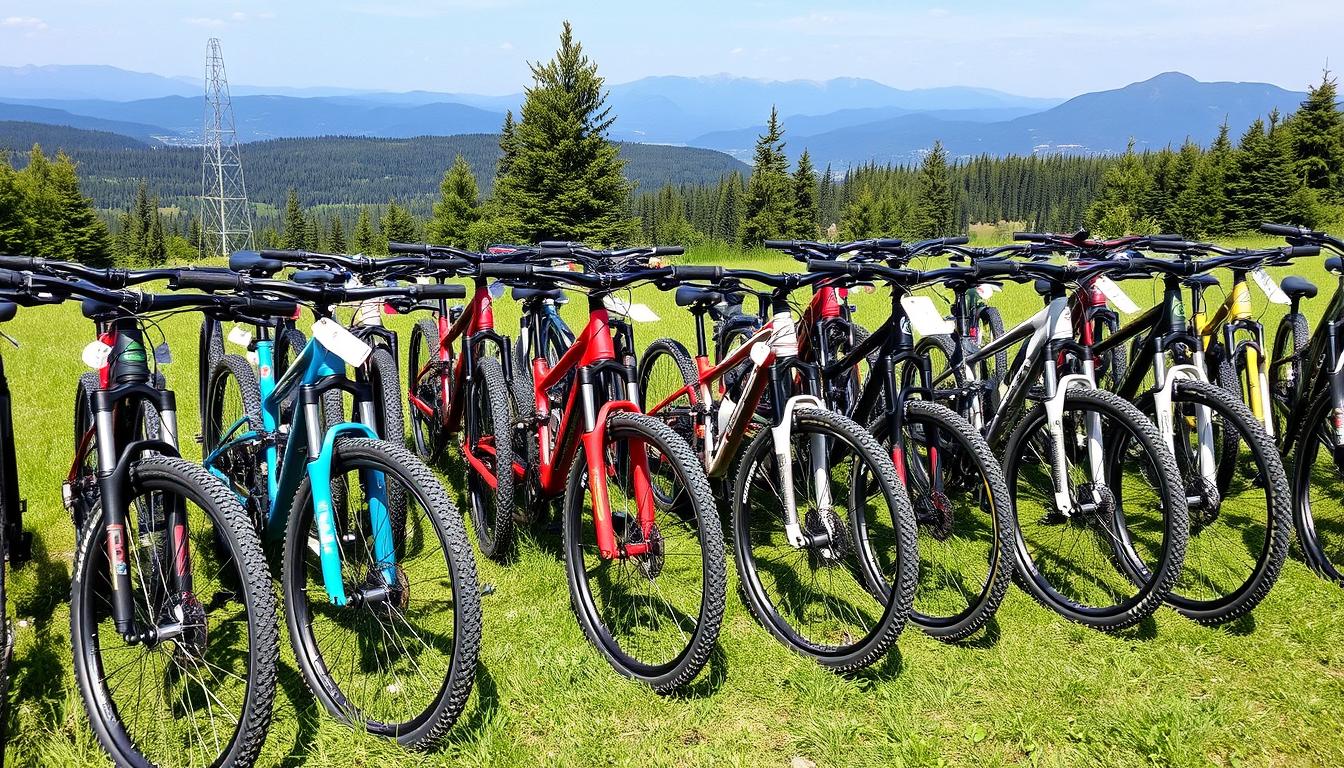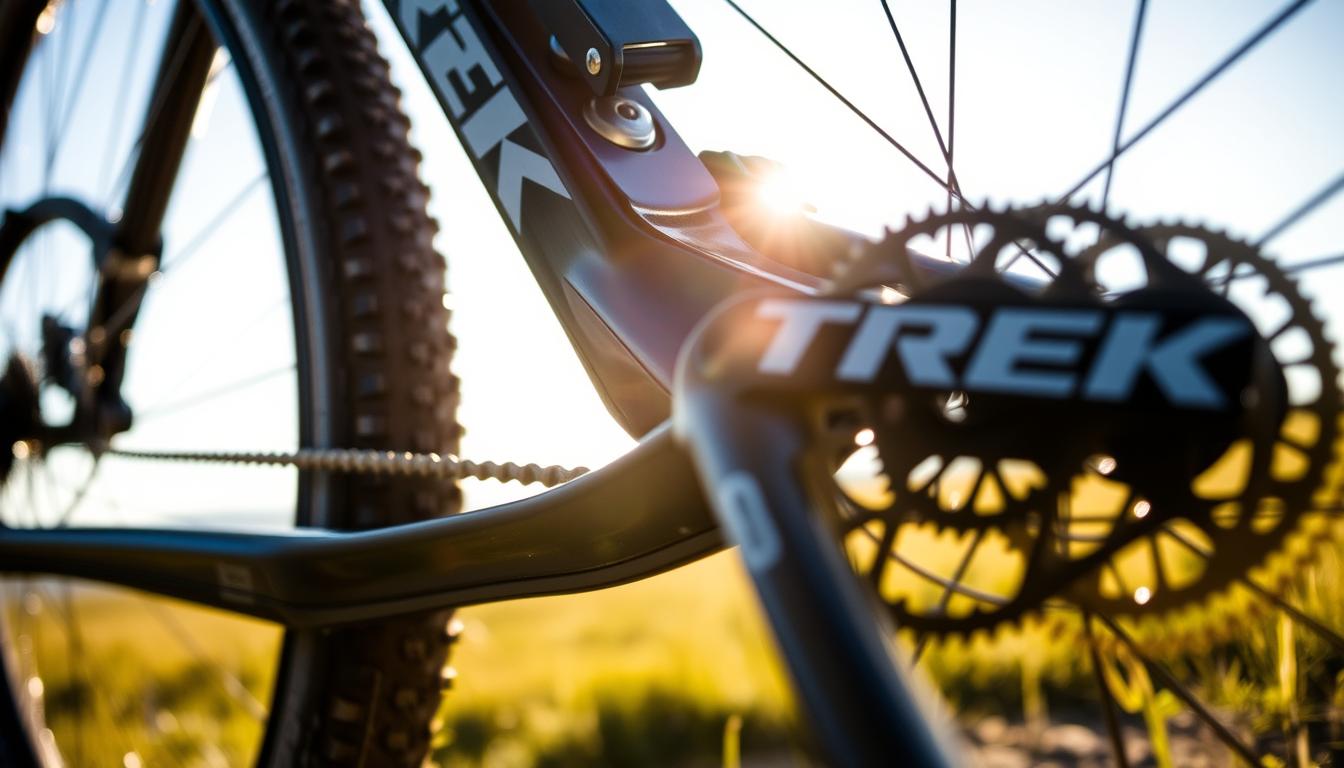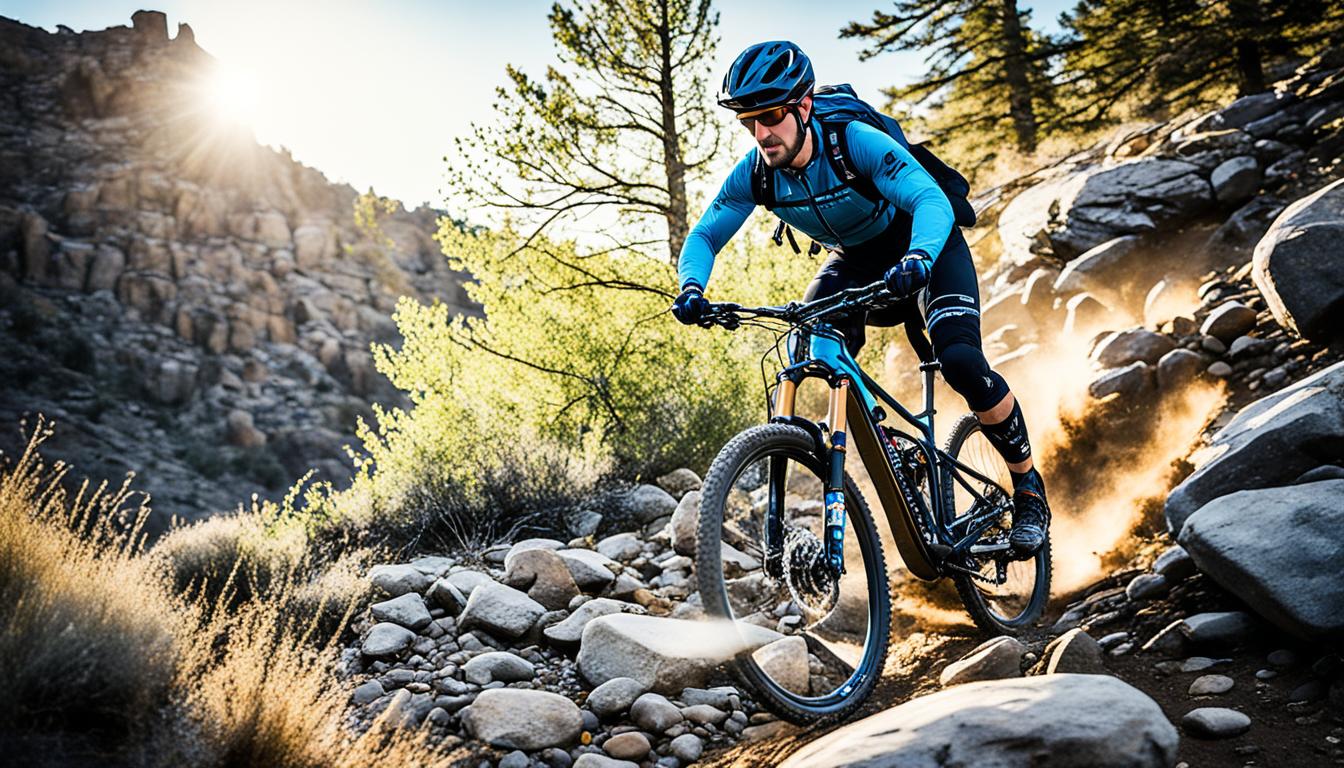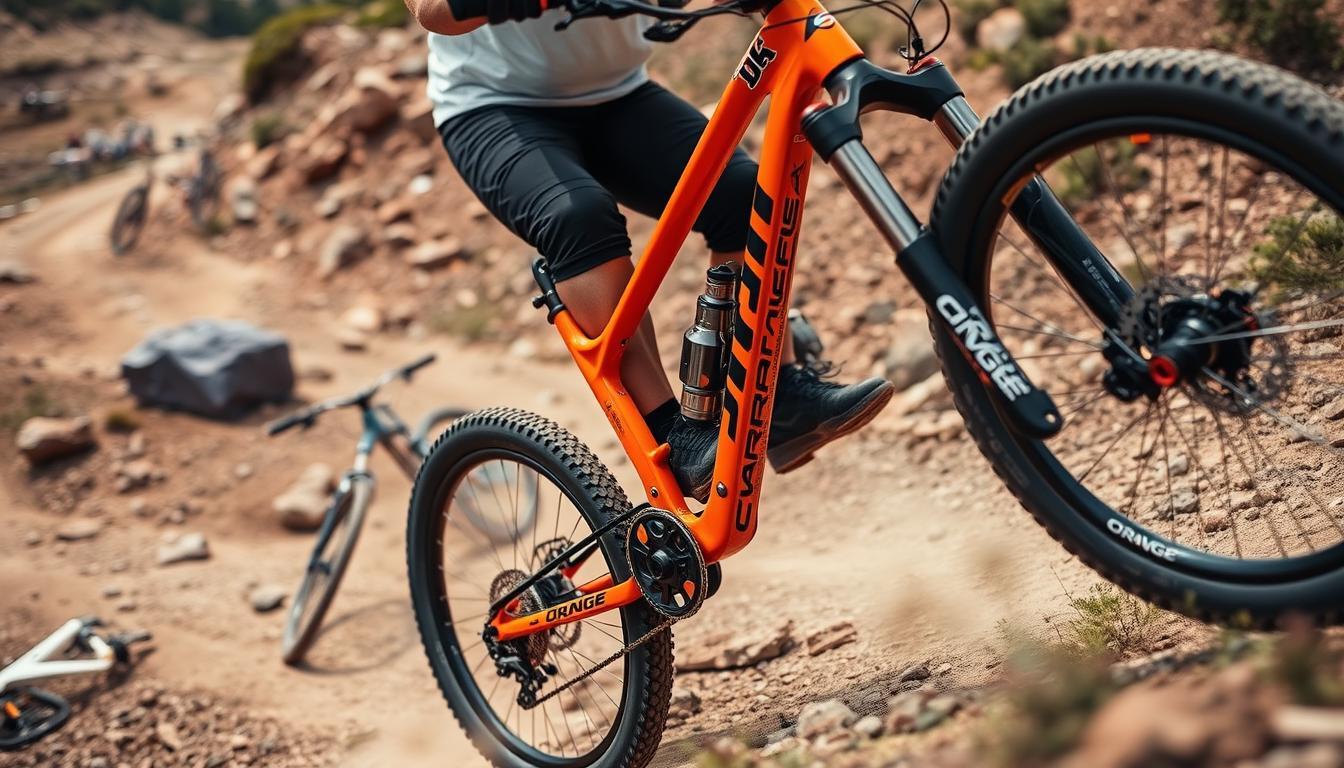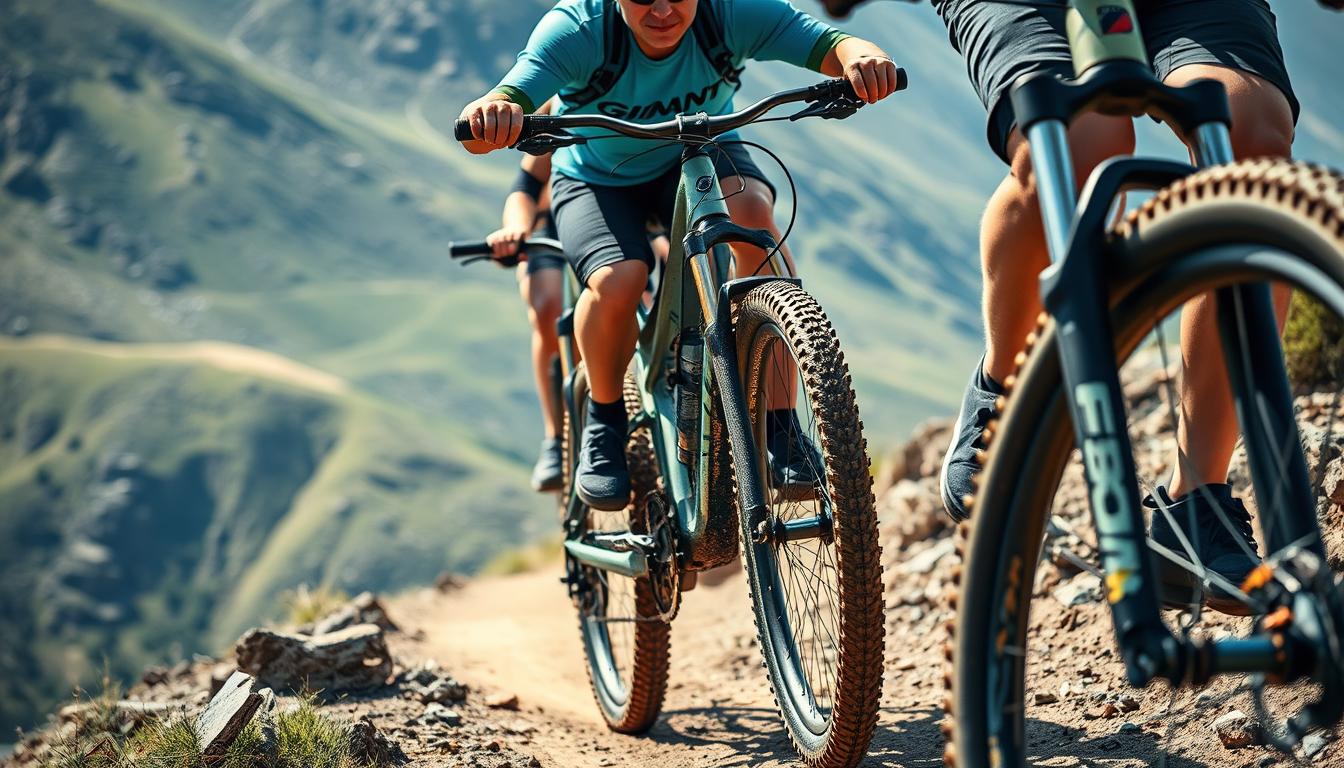As more cyclists embrace new tech, the popularity of e-mountain bikes (eMTBs) has grown. They are liked for their electric boost, making rides easier and trails more welcoming for many. Yet, whether to go for an eMTB or a standard bike depends on what you prefer. This includes how fit you are, how you like to ride, and where you’ll be cycling.
We’ll look closely at how e-mountain bikes and traditional bikes perform. E-bikes can change the way you ride. They let you speed up, go further, and have more fun, especially on tough paths. For more tips on choosing the perfect bike, check out this guide. Let’s start our journey into these two cycling worlds and what sets them apart.
Understanding E-Mountain Bikes
E-mountain bikes blend traditional mountain biking with modern tech. They offer a different riding experience. What makes them special? These bikes have an electric motor for power help. This makes tough terrains and steep climbs easier to handle. Their battery and electric tech let riders enjoy long journeys. They won’t get as tired on demanding trails.
What Are E-Mountain Bikes?
E-mountain bikes look like normal mountain bikes. But, they have advanced parts that change the way you ride. They have an electric motor, usually 250W, which helps on steep hills. This motor assistance lets riders explore more paths easily. They still feel the excitement of cycling off-road.
How Do They Work?
E-mountain bikes work by combining the motor, battery, and the rider’s effort smoothly. They help up to a certain speed – 25km/h in Europe and 32km/h in North America. Cannondale motors, for instance, offer up to 85Nm of torque. This can increase power by 400%. With extra battery packs, the bike can go up to 175 kilometres (108 miles) on one charge.
The Key Differences Between E-Mountain Bikes and Traditional Mountain Bikes
Mountain biking has grown leaps and bounds, particularly with e-mountain bikes (E-MTBs) making an entrance. Riders looking at their choices need to understand the main differences. Power assistance and the physical feel of each bike type are where the main differences lie.
Power and Assistance
E-MTBs boost riders with additional power, thanks to their motors. This power helps tackle tough trails and steep climbs more easily. For those finding mountain biking hard, this feature broadens the sport’s appeal. Riders can enjoy quicker acceleration on an E-MTB, making uphill journeys seem easier. High-end brands like Canyon, through models such as the Canyon Spectral:ON, showcase this technology well.
Physical Experience and Fitness
Traditional mountain bikes provide a unique physical experience in comparison. They encourage a deeper connection with the landscape, leading to a better workout. This can be great for those wanting to boost their fitness. E-MTBs, however, change the game a bit. They let riders go further with less tiredness, but some worry about their fitness levels dropping. Finding the balance between enjoying biking and keeping fit is key in today’s evolving biking world.
Advantages of E-Mountain Bikes
E-mountain bikes enhance the ride for all fitness levels. They make mountain biking more inclusive and fun. This lets everyone enjoy the outdoors together.
Accessibility for Various Fitness Levels
One key benefit of advantages of e-mountain bikes is they unite cyclists of different fitness levels. The electric assist helps overcome fitness gaps. So, family and friends can cycle together, no matter their shape. These bikes also promote healthy fat burn without overdoing it.
Extended Riding Range
E-mountain bikes let riders go further. They can discover new paths and cover more ground. With some bikes offering up to 125 kilometres range, adventures can last longer. This means less worry about stamina limits on exciting journeys.
Increased Fun on Uphill Rides
Uphill journeys are more fun with e-mountain bikes. Electric assistance means less struggle with hills and steep slopes. This improves stability and confidence, especially when going downhill. It opens up trails, making every ride more enjoyable.
Potential Drawbacks of E-Mountain Bikes
E-mountain bikes bring a lot of benefits. However, they also have downsides that riders need to think about. Knowing these can help bikers make wise choices about what they need.
Weight Considerations
E-mountain bikes are quite heavy. They weigh between 40 to 70 pounds, while regular mountain bikes weigh around 30 to 40 pounds. This extra weight makes them harder to handle and carry. It can be tough moving them on steep paths or during long trips.
Maintenance Challenges
Looking after e-mountain bikes can be complex. They have electrical parts and batteries needing special care. Expect more maintenance for parts like the drivetrain, brakes, and tires. This means more time and money spent over the bike’s life.
Cost Implications
E-mountain bikes are pricier than standard ones, costing about $4,000 more because of their electronic parts. This price is important for buyers to consider. They also need to think about ongoing costs, like for maintenance and battery changes. This is essential for planning their finances in the long run.
Conclusion
In comparing e-mountain bikes and traditional mountain bikes, it’s clear both have their pros and cons. E-MTBs offer electric assistance. This makes them suitable for riders of different fitness levels. They can go 20 to 40 miles on one charge. This lets riders explore further, especially on steep trails. For these paths, e-MTBs make it easier to overcome obstacles. Learn how to tackle steep terrain with an e-bike.
Traditional mountain bikes, however, provide a classic feel that many love. They allow a closer bond with the environment and improve physical fitness. There’s no need to worry about battery life or extra maintenance. Also, they are better for the planet, which is great for eco-conscious riders.
The bike you choose should match your personal needs, dreams, and the trails you want to explore. As e-bike tech improves, future models might solve current environmental issues. This could make e-mountain bikes even more popular. When choosing, think about your riding style and objectives. Make sure you pick the bike that fits your mountain biking adventure best.
FAQ
What is the main advantage of e-mountain bikes over traditional mountain bikes?
E-mountain bikes offer electric help. This support makes it easier to ride over hard terrains and big hills. Riders can enjoy longer journeys and have more fun.
Can e-mountain bikes be used like traditional mountain bikes?
Yes, you can use e-mountain bikes just like traditional ones. But, they give you extra support. This is especially helpful on tough trails and during extended rides.
How does the maintenance of e-mountain bikes differ from traditional mountain bikes?
E-mountain bikes have more complex maintenance needs. This is because of their electrical parts. These parts need checks along with regular bike upkeep.
Are e-mountain bikes suitable for beginners?
Definitely, e-mountain bikes are great for starters. They give power help. This makes tough trails easier and helps new riders gain confidence.
Do e-mountain bikes affect physical fitness levels?
E-mountain bikes assist but you still pedal. So, you’re active but feel less tired. This lets you go farther and enjoy cycling without getting worn out on climbs.
What kind of terrain can I tackle with an e-mountain bike?
E-mountain bikes handle various terrains. You can take on steep hills, rugged paths, and other challenging areas. They’re meant for many adventures.
How does the weight of e-mountain bikes impact performance?
They are heavier because of the motor and battery. This might make them harder to handle and move. It’s a challenge if you carry them often.
Are there any range anxiety concerns with e-mountain bikes?
Yes, worrying about battery life is common. The distance you can go depends on the battery. Always plan your trips with this in mind!
What is the cost difference between e-mountain bikes and traditional mountain bikes?
E-mountain bikes cost more at the start. This is due to their high-tech parts. Think about the long-term costs and repairs before choosing.
